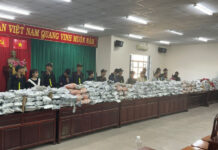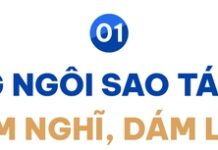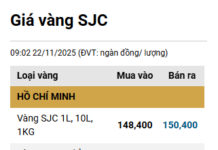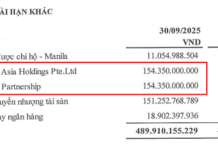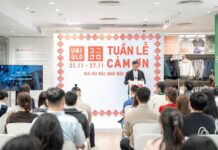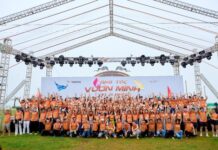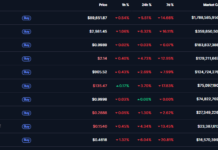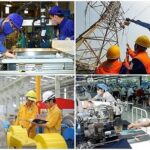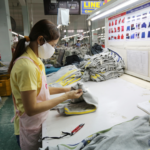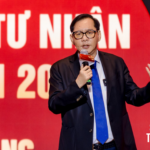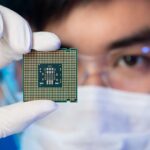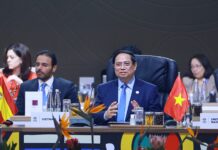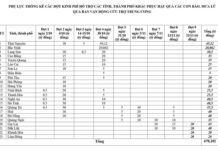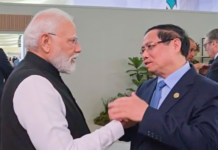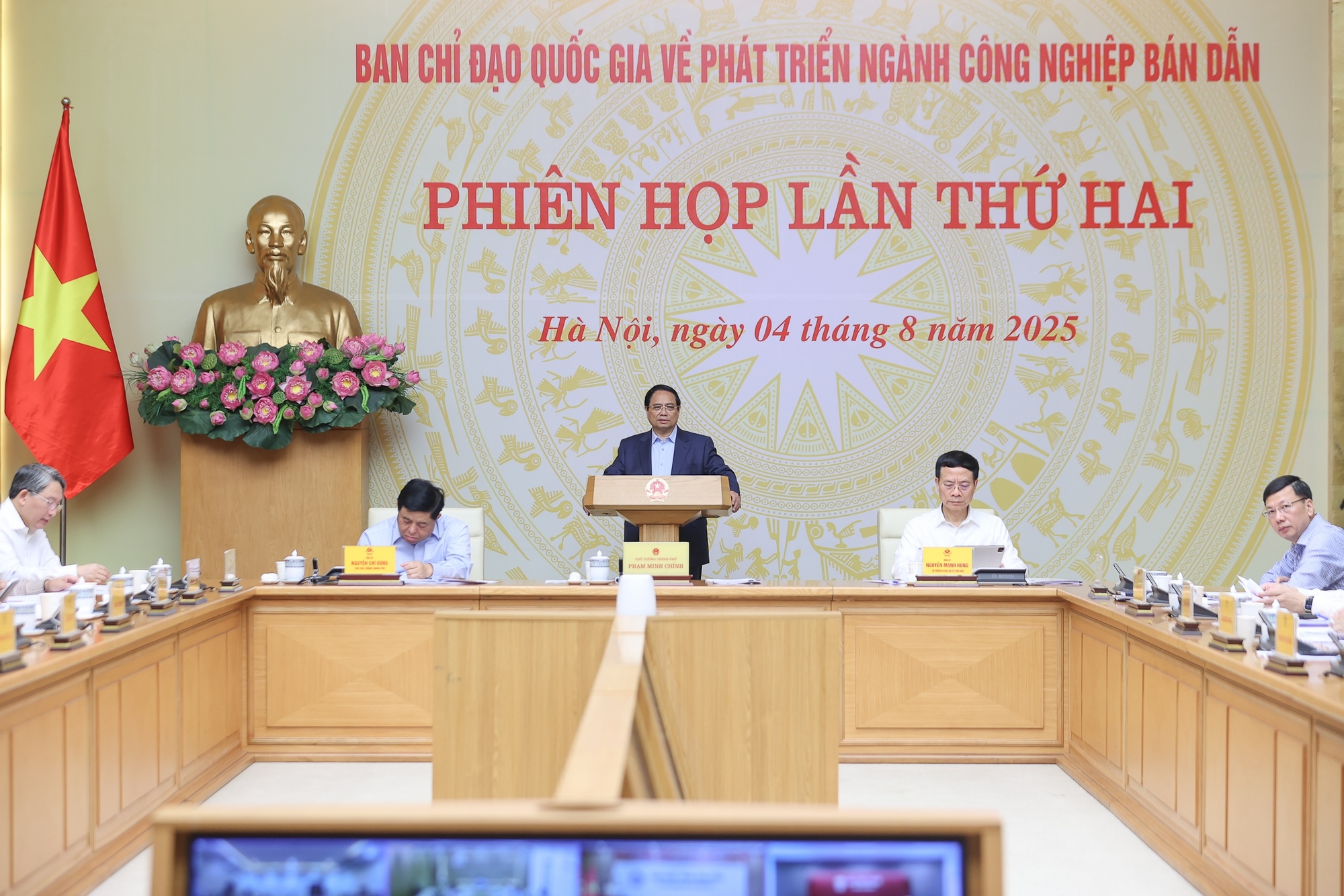
|
Prime Minister Pham Minh Chinh chairs the 2nd meeting of the National Steering Committee for Semiconductor Industry Development – Photo: VGP |
The Government Office has just issued Notification No. 439/TB-VPCP dated August 22, 2025, on the conclusions of the National Steering Committee for Semiconductor Industry Development at its second meeting held on August 4, 2025.
The notification clearly states that the Fourth Industrial Revolution is driving many technological breakthroughs, with semiconductors and artificial intelligence playing strategic roles. The global semiconductor industry is growing rapidly, but it also faces the risk of supply chain disruptions due to geopolitical competition.
Vietnam is currently in a phase of economic restructuring, moving away from a model reliant on cheap labor, manufacturing, and resource extraction to one based on science, technology, innovation, and digital transformation. Semiconductors are considered a key area, offering opportunities to enhance the country’s competitiveness.
The Government and the Prime Minister have vigorously implemented the directives of the Party and the Political Bureau, with the General Secretary taking the lead. They have brought about changes in awareness and development mindset, improved institutions and policies, developed infrastructure, trained human resources, and expanded international cooperation. Several large corporations have shown interest in cooperation, and research institutes, universities, and localities have proactively participated, laying the foundation for the semiconductor industry.
However, challenges remain, including limited investment capital, inadequate institutions, slow implementation progress, ineffective collaboration between industry, academia, and research institutes, lack of technological breakthroughs, and significant technical barriers in technology transfer.
Development Orientation: Shifting from Investment Incentives to Technology Transfer Incentives
The Steering Committee sets the goal that by 2027, Vietnam will be able to design, manufacture, and test certain necessary semiconductor chips. The strategic orientation is to shift from investment attraction incentives to incentives for technology transfer and the development of high technology associated with green and sustainable growth.
The semiconductor industry is identified as a key task, requiring synchronous implementation and mobilization of the entire political system, businesses, and society. The development perspective is to “catch up, go together, and surpass,” ensuring a harmonious ecosystem, flexible institutions, seamless infrastructure, and intelligent human resources.
Policies to Support Businesses and Human Resources
The Prime Minister requests ministries, sectors, and localities to implement the Strategy for the Development of Vietnam’s Semiconductor Industry towards 2030, with a vision to 2050, and the Program for Human Resource Development. Specifically, the Ministry of Finance continues to attract high-quality FDI, develop credit policies for students and researchers in STEM fields, while the Ministry of Science and Technology takes the lead in monitoring and proposing mechanisms and policies.
The Ministry of Foreign Affairs is tasked with strengthening international cooperation and mobilizing Vietnamese experts overseas, while the Ministry of Education and Training promotes linkages in training between the state, schools, and enterprises. The Ministry of Home Affairs is responsible for building policies to attract and retain talent for the semiconductor industry, and media agencies are expected to enhance propaganda and promote Vietnam’s image as a destination for the semiconductor industry.
Completing Infrastructure, Energy, and Supply Chain
The Ministry of Industry and Trade must ensure a stable power supply, prioritizing clean energy, and propose a separate electricity price mechanism for semiconductor manufacturing plants, to be submitted to the Prime Minister in the third quarter of 2025. The Ministry of Construction should research traffic infrastructure and logistics solutions to serve semiconductor businesses and promote the application of chips in smart transportation and smart cities.
The Ministry of Agriculture and Environment is assigned to propose a list of strategic minerals, promote exploration and processing to reduce import dependence, and promote localization of the supply chain. The Ministry of Justice coordinates in reviewing and completing the legal framework to create a favorable corridor for the development of the industry.
Prime Minister Pham Minh Chinh, Head of the Steering Committee, requests that ministries, sectors, and localities closely follow the set goals and solutions, organize supervision and inspection of implementation. In August 2025, the Ministry of Finance, in coordination with the Ministry of Science and Technology, will propose the reorganization of the Steering Committee, including transferring the standing agency from the Ministry of Finance to the Ministry of Science and Technology.
– 20:43 22/08/2025
“The Billionaire’s Vision: Saigon Marina IFC – A Hub for Financial Institutions, Tech Giants, and Logistics Experts with Over 10,000 Professionals Working Daily.”
“The inauguration of Saigon Marina IFC is a pivotal moment for Ho Chi Minh City’s aspirations to become an international financial hub. This milestone event, witnessed by government leaders, the State Bank of Vietnam, and HDBank, signifies the city’s embrace of a new era of integration, innovation, and global capital attraction.
Mr. Tran Le Nguyen: Kido Harnesses the Power of AI for Round-the-Clock Sales, Transcending the Need for KOLs and KOCs
“The leadership at Kido Group attests to the power of their digital transformation strategies, claiming a remarkable 70% savings in time and costs compared to traditional sales and marketing methods. This forward-thinking company is revolutionizing the industry with its innovative approach, harnessing the potential of technology to streamline processes and achieve unprecedented efficiency.”




